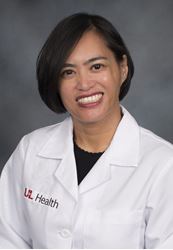On Monday, Congress passed a second stimulus agreement, along with a federal budget. The legislation awaits the President’s signature at the time this alert was drafted. The legislation will, among other things, provide funding for the distribution of a COVID-19 vaccine and additional funding for states to conduct testing, tracing and coronavirus mitigation programs. The legislation also includes provisions regarding small businesses, including physician practices, to apply for Paycheck Protection Program (PPP) forgivable loans similar to those offered earlier in the year.
In addition to Covid-specific provisions, the legislation also includes language regarding “surprise billing.” Patients will only be responsible for their in-network cost-sharing amounts, including deductibles, in both emergency situations and certain other situations when a patient is not able to choose an in-network provider. In such situations, providers will have to work with insurers to settle on a fair price. The final compromise requires insurers and medical providers who cannot agree on a payment rate to use an outside arbiter to decide, with apparently no floor for entering arbitration and no ceiling for the arbiter to consider when deciding on a fair payment. KMA and other groups advocated for changes to the original compromise legislation reached on this issue a few weeks ago and because of that advocacy, significant changes were made, but KMA has not been able to review the final compromise on this issue.
More information on this legislation will be forthcoming once the final version is signed by the President and released for review. Specifically, KMA hopes to provide an educational seminar on the PPP loan section, as well as additional information regarding surprise billing. Members are encouraged to watch for these offerings in the coming weeks.
In Your Own Words:
Valerie F. Briones-Pryor, M.D.
KMA is sharing the first-person accounts of physicians from across the state and their experiences amid the COVID-19 pandemic. KMA is currently seeking submissions of photos and/or essays from physicians who have received a COVID-19 vaccine. These stories will also be published at kyma.org/covid19. If you are interested in submitting an account, please email Emily Schott, schott@kyma.org.
Valerie Briones-Pryor, M.D. has been director of the COVID-19 unit at the University of Louisville Jewish Hospital since March. She was one of the first people in Kentucky to receive the COVID-19 vaccine.
 Hope
Hope
Valerie F. Briones-Pryor, MD
Hope. The word “hope”, only four letters long, but packed with such big meaning. As the third person in Kentucky to receive the COVID vaccine and working on the COVID floor since March, hope is the only answer I can give when asked what the COVID vaccine means to me.
Hope that the 28 patients that I have lost to COVID, or the 2000+ Kentuckians lost to COVID, or the 300,000+ Americans whom we have lost to COVID did not die in vain.
Hope that one day, there will be no need for a COVID unit or floor and that worrying whether we have enough PPE, ICU beds, ventilators, or high-flow oxygen machines will be distant memories.
Hope that I will no longer worry when one of my family members, friends, colleagues, or staff members start coughing if they will become a statistic.
Hope that I will no longer have to strip my COVID scrubs off before I can come into my own home just to hug my child and husband.
Hope that millions of Americans who barely can make ends meet because of the effects of COVID on their livelihood can finally return to work.
Hope that I can finally sit down at my favorite restaurant, enjoy my meal and a glass of wine without having to put a mask on just to get to my table. I am even more hopeful that I can enjoy that meal with friends whom I have not seen since before the pandemic.
Hope that I will no longer have to have difficult discussions with patients’ family members regarding end-of-life care over FaceTime or Zoom.
Hope that my son and the millions of students like him, finally get to be with their teachers, classmates, and friends in-person at school.
Hope that I can venture outside my bubble without worrying where the people outside my bubble have been and if they may have COVID.
Hope that, one day, I can shake someone’s hand or just smile at people passing by without having to wear a mask.
Hope that my N95 mask will not leave permanent lines on my face from wearing it almost every day since March.
Hope that the general public will be just as excited and inspired as I am as I scroll through the numerous pictures of healthcare workers all over the country who are rolling up their sleeves for the COVID vaccine.
Hope that the general public will stand beside me and my fellow healthcare workers and get the vaccine so we can defeat COVID together.
Hope that this virus that has been destroying us for the past year is finally what unites us.
ACIP Makes New Recommendations on COVID-19 Vaccine Distribution
On Sunday, the Centers for Disease Control (CDC) Advisory Committee on Immunization Practices (ACIP) made new recommendations on those next in line to receive the COVID-19 vaccine. The group voted 13-1 to recommend frontline essential workers and people over 75 be in the next priority group for the vaccine.
ACIP’s announcement stated that determining who is next in line to get a COVID-19 vaccine comes down to the balance between saving lives and keeping society functioning. So far, health care workers and residents and staff in long-term care facilities have been first in line in group 1A. The committee has recommended that the 1B group include people over 75 years old and frontline essential workers such as police, fire fighters, teachers, grocery, postal service and public transit workers.
In group 1C—the committee recommends people 65 to 74 years old, people 16-64 with high-risk medical conditions and other essential workers, like transportation and logistics, construction and the media.
It is important to note that these are recommendations, not mandates, and that individual states may use them as a guide to create their own recommendations.
Additional information from the CDC on the phased allocation of COVID-19 vaccinations is available here.


